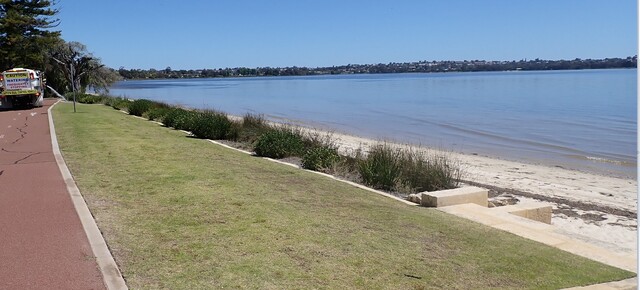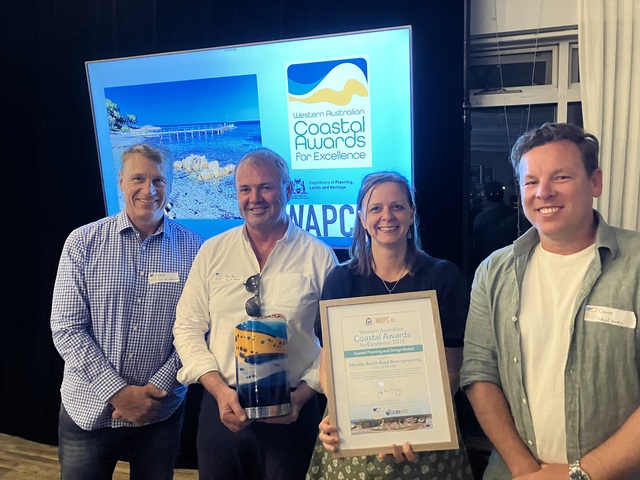The City of Melville’s foreshore care and restoration work has landed it the Coastal Planning and Design Award at the 2025 Western Australian Coastal Awards for Excellence, held on Monday, 27 October.
City of Melville Mayor Katy Mair was excite by the win.
“I’m thrilled that the City has been recognised for our Melville Beach Road Bioengineering Project, claiming the Coastal Planning and Design Award at the 2025 Western Australian Coastal Awards for Excellence,” she said.
“With more than 18km of foreshore spanning across the City of Melville, we know that these are important places for our community, and for the City it’s critical that we continue to protect and enhance our natural environment.
“It’s fantastic to see the great outcomes from the Melville Beach Road Bioengineering Project including enhancing biodiversity and habitat connectivity, and I’m looking forward to seeing more foreshore management which protects our environment.”
In line with the City’s priority to protect and enhance the natural environment, the City’s Melville Beach Road Bioengineering Project in Applecross was recognised for exemplifying innovative bioengineering techniques, including brush log walls, tied into rock toe protection, and extensive native vegetation restoration.
Bioengineering uses centuries old techniques that have proven effective to manage erosion from shoreline streamflow forces and allow the opportunity for native plants to become established, decreasing the reliance on rock revetments through sustainable, natural erosion control solutions.
The project began in April 2024 and has seen achievements such as:
• 90 per cent survival rates for non-irrigated native plants, enhancing biodiversity and habitat connectivity.
• Zero environmental incidents during construction, with rigorous safeguards protecting Swan River water quality, like deployment of silt curtains.
• Integration of sustainable practices, such as natural material use and climate-adaptive design for a 25-year lifespan.
• Improved community access via limestone stairs and universal accessibility features, balancing ecosystem restoration with public amenity in a high demand space for recreational users.









